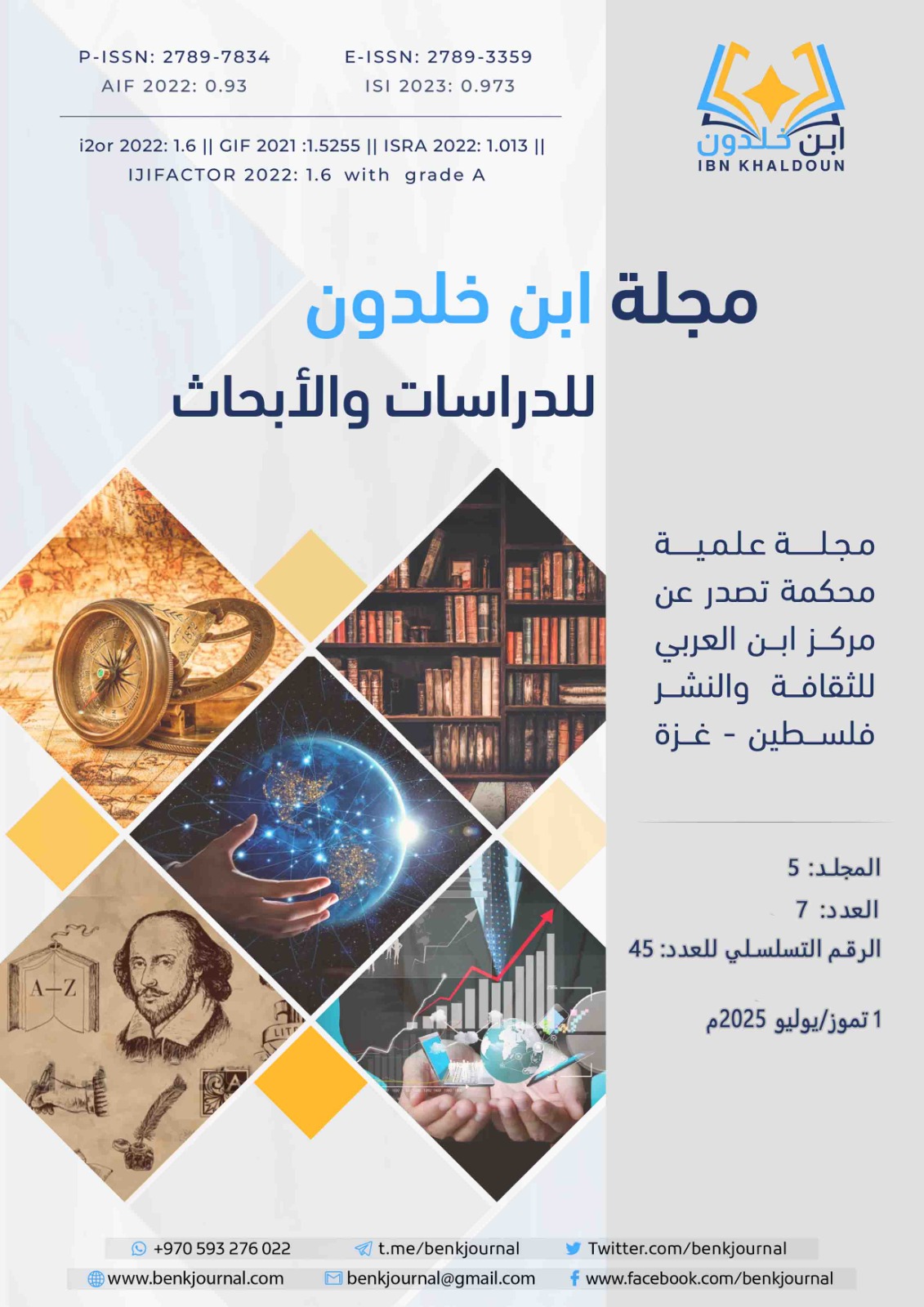تشكيل الصورة الشعرية عبر ثنائية الأمل واليأس في شعر مريد البرغوثي وتوماس إليوت: دراسة مقارنة
محتوى المقالة الرئيسي
الملخص
هدفت هذه الدراسة إلى استكشاف أثر ثنائية الأمل واليأس في تشكيل الصورة الشعرية لدى كل من الشاعر الفلسطيني مريد البرغوثي والشاعر الإنجليزي الأمريكي توماس ستيرنز إليوت، وذلك من خلال مقاربة مقارنة تستند إلى الخلفيات الثقافية، والبنى الفنية، والتجارب الوجودية لكل منهما. وقد اعتمدت الدراسة على المنهج الوصفي التحليلي والمنهج المقارن، موظفة أدوات تحليل النصوص للكشف عن الأبعاد النفسية والدلالية والرمزية في نتاجهما الشعري. وخلصت الدراسة إلى أن كلا الشاعرين جعلا من الأمل واليأس محورًا أساسيًا لبناء صور شعرية تعكس أزماتهما الشخصية والإنسانية؛ إذ يغلب على شعر البرغوثي الأمل المستمد من الحنين والهوية والوطن رغم مرارة المنفى، بينما يسود لدى إليوت اليأس الوجودي والتشظي الروحي الناتج عن أزمة الإنسان الغربي في ظل الحداثة، مع إشارات باهتة إلى الأمل داخل رموز دينية أو صوفية. وقد أظهرت الدراسة أن السياق الثقافي يلعب دورًا جوهريًا في توجيه هذه الصور، كما أبرزت الوظائف الجمالية والفكرية للصورة الشعرية بوصفها تعبيرًا عن صراع داخلي يتجاوز الذات ليصل إلى الهمّ الإنساني العام. وتوصي الدراسة بتوسيع نطاق النقد المقارن ليشمل الثنائيات الشعورية الكبرى في الشعر العربي والغربي، لما تحمله من طاقة تعبيرية تكشف جوهر التجربة الإنسانية المشتركة.
This study explores the impact of the duality of hope and despair on the construction of the poetic image in the works of Palestinian poet Mourid Barghouti and the Anglo-American poet T. S. Eliot, through a comparative approach that considers their cultural backgrounds, artistic structures, and existential experiences. Employing both descriptive-analytical and comparative methods, the research utilizes textual analysis tools to uncover the psychological, symbolic, and semantic dimensions embedded in their poetry. The findings reveal that both poets place this emotional duality at the core of their poetic expression: Barghouti draws upon themes of exile, memory, and homeland to craft images of enduring hope despite the bitterness of displacement, while Eliot presents a vision of existential and spiritual fragmentation shaped by the crisis of Western modernity, with faint traces of hope veiled in religious or mystical symbolism. The study inderscores the crucial role of historical and cultural context in shaping these poetic images and highlights the aesthetic and intellectual functions of the poetic image as a reflection of inner conflict that transcends the self and speaks to the broader human condition. It concludes by advocating for the expansion of comparative criticism to include major emotional dualities in both Arab and Western poetry as a means of revealing the expressive power underlying shared human experiences across cultures.
المقاييس
تفاصيل المقالة

هذا العمل مرخص بموجب Creative Commons Attribution-NonCommercial 4.0 International License.
المراجع
أولًا: المراجع العربية
• البرغوثي، مريد .(2003) رأيت رام الله (ط. 5). دار الشروق.
• البرغوثي، مريد .(2010) ولدت هناك، ولدت هنا. دار الشروق.
• البرغوثي، مريد .(2005) منتصف الليل. دار الأدهم.
• البرغوثي، مريد .(2003) ليلة مجنونة. دار الشروق.
• القباني، علي (2015). ثنائية الأمل واليأس في الشعر العربي الحديث. مجلة البحوث الأدبية، 12(1)، 4567-.
• الهاشمي، حسين (2018). الصراع الوجداني في الشعر العربي الحديث: دراسة نفسية في ثنائية الأمل واليأس .مجلة الآداب واللغة، 10(2)، 88-105.
ثانيًا: المراجع الأجنبية
• Abrams, M. H., & Harpham, G. G. (2011). A glossary of literary terms (10th ed.). Wadsworth Cengage Learning.
• Childs, P. (2001). Modernism. Routledge.
• Eliot, T. S. (1915). The Love Song of J. Alfred Prufrock. Poetry Magazine.
• Eliot, T. S. (1920). Gerontion. In Poems. Faber and Faber.
• Eliot, T. S. (1922). The Waste Land. The Criterion.
• Eliot, T. S. (1925). The Hollow Men. Faber and Faber.
• Eliot, T. S. (1936). Burnt Norton. In Four Quartets. Faber and Faber.





